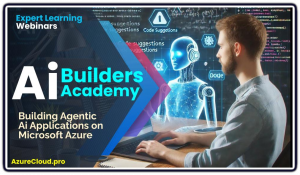Build an AI Agent in VS Code with AI Toolkit and Azure AI Foundry
The AI Toolkit for Visual Studio Code is an extension that enhances VS Code’s capabilities for AI development.
 Visual Studio Code (VS Code) is a free, open-source code editor developed by Microsoft, renowned for its versatility and support for multiple programming languages, including Python, JavaScript, and more.
Visual Studio Code (VS Code) is a free, open-source code editor developed by Microsoft, renowned for its versatility and support for multiple programming languages, including Python, JavaScript, and more.
It offers a lightweight yet powerful environment with features like IntelliSense for code completion, debugging tools, version control integration (e.g., Git), and a rich ecosystem of extensions.
Its customizable interface and cross-platform support make it a popular choice for developers building applications, including AI agents.
AI Toolkit for Visual Studio Code
The AI Toolkit for Visual Studio Code is an extension that enhances VS Code’s capabilities for AI development.
It provides tools to streamline the creation, testing, and deployment of AI models and agents, integrating seamlessly with cloud platforms like Azure. The toolkit includes features like model selection from catalogs (e.g., Azure OpenAI models), code generation for AI workflows, and debugging support for AI applications.
It simplifies tasks such as configuring models, managing datasets, and testing AI responses within the VS Code environment.
To build AI agents, VS Code and the AI Toolkit work together with platforms like Azure AI Foundry. Developers start by installing the AI Toolkit and Azure AI Foundry extensions in VS Code. Using the AI Toolkit, they can select a pre-trained model (e.g., gpt-4o) and configure an agent’s behavior, such as defining prompts or integrating tools like Retrieval Augmented Generation (RAG) for data-driven responses.
The Azure AI Foundry extension provides a visual Agent Designer to create and manage agent configurations, test them in a playground environment, and deploy them to Azure. This combination allows developers to code, test, and scale AI agents efficiently, leveraging VS Code’s editing power and Azure’s cloud infrastructure for real-world applications.



